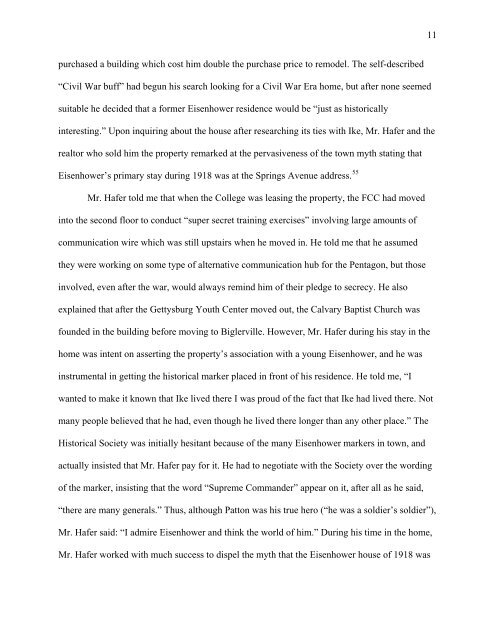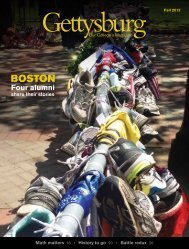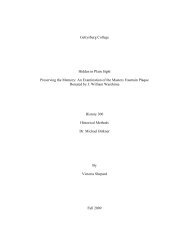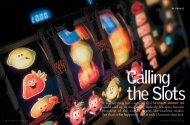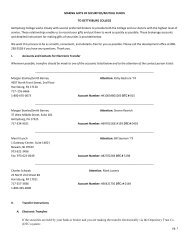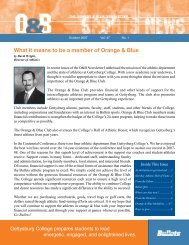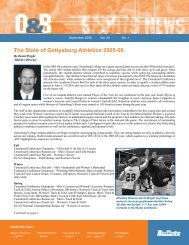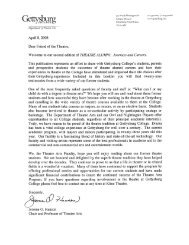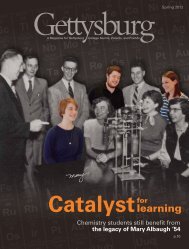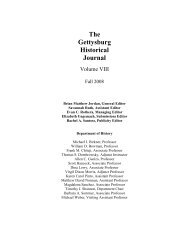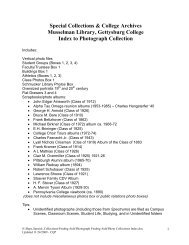157 North Washington Street Paper - Gettysburg College
157 North Washington Street Paper - Gettysburg College
157 North Washington Street Paper - Gettysburg College
You also want an ePaper? Increase the reach of your titles
YUMPU automatically turns print PDFs into web optimized ePapers that Google loves.
purchased a building which cost him double the purchase price to remodel. The self-described<br />
“Civil War buff” had begun his search looking for a Civil War Era home, but after none seemed<br />
suitable he decided that a former Eisenhower residence would be “just as historically<br />
interesting.” Upon inquiring about the house after researching its ties with Ike, Mr. Hafer and the<br />
realtor who sold him the property remarked at the pervasiveness of the town myth stating that<br />
Eisenhower’s primary stay during 1918 was at the Springs Avenue address. 55<br />
Mr. Hafer told me that when the <strong>College</strong> was leasing the property, the FCC had moved<br />
into the second floor to conduct “super secret training exercises” involving large amounts of<br />
communication wire which was still upstairs when he moved in. He told me that he assumed<br />
they were working on some type of alternative communication hub for the Pentagon, but those<br />
involved, even after the war, would always remind him of their pledge to secrecy. He also<br />
explained that after the <strong>Gettysburg</strong> Youth Center moved out, the Calvary Baptist Church was<br />
founded in the building before moving to Biglerville. However, Mr. Hafer during his stay in the<br />
home was intent on asserting the property’s association with a young Eisenhower, and he was<br />
instrumental in getting the historical marker placed in front of his residence. He told me, “I<br />
wanted to make it known that Ike lived there I was proud of the fact that Ike had lived there. Not<br />
many people believed that he had, even though he lived there longer than any other place.” The<br />
Historical Society was initially hesitant because of the many Eisenhower markers in town, and<br />
actually insisted that Mr. Hafer pay for it. He had to negotiate with the Society over the wording<br />
of the marker, insisting that the word “Supreme Commander” appear on it, after all as he said,<br />
“there are many generals.” Thus, although Patton was his true hero (“he was a soldier’s soldier”),<br />
Mr. Hafer said: “I admire Eisenhower and think the world of him.” During his time in the home,<br />
Mr. Hafer worked with much success to dispel the myth that the Eisenhower house of 1918 was<br />
11


